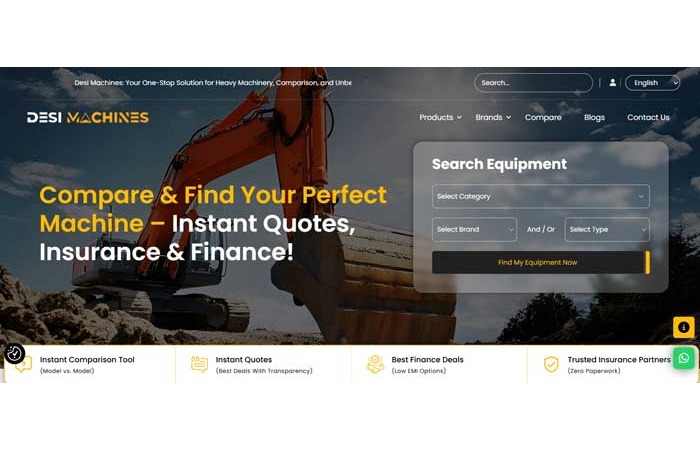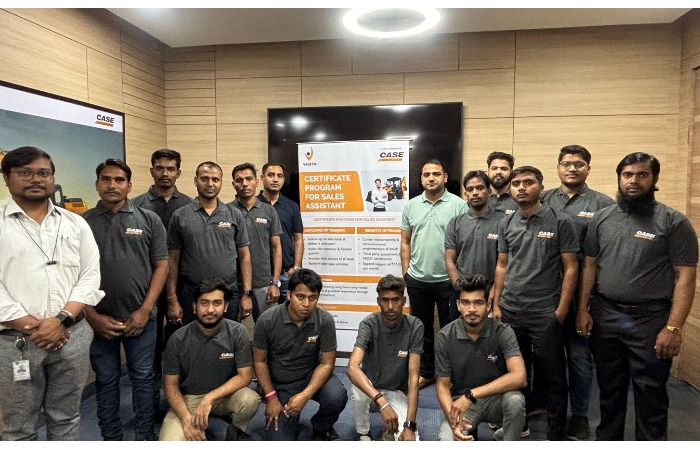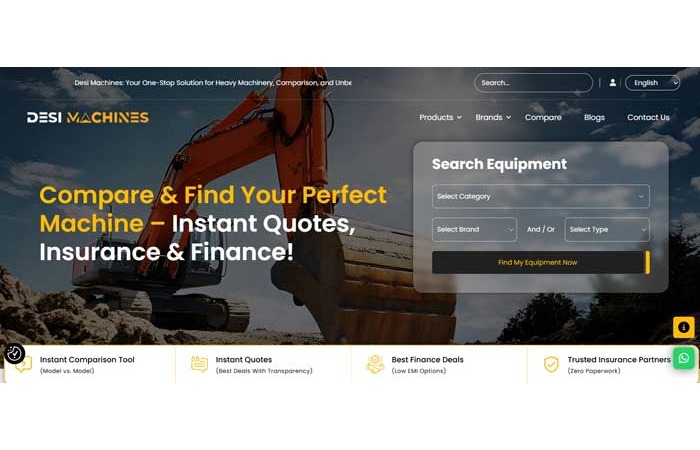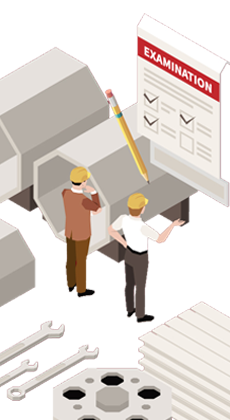Schedule a Call Back
Lifting India’s Future
2025-05-30

As India accelerates its pace of infrastructure development—from towering skyscrapers to solar parks and smart cities—few machines are more critical, yet less spotlighted, than industrial cranes. These mechanical workhorses are lifting everything from precast concrete and steel girders to containers and wind turbine blades. More than ever, cranes are enabling India’s transformation from a developing economy to a global economic engine.
But the story of cranes in India isn’t just about lifting capacity anymore. It’s about intelligent lifting—safer, smarter, more efficient, and increasingly digital. The industrial crane market is evolving fast, with growing demand from diverse sectors, the rise of online rental platforms, increasing safety expectations, and new-age automation tools redefining operations.
A boom fuelled by infra
India’s industrial crane market is growing in lockstep with its infrastructure ambitions. Flagship government initiatives like the National Infrastructure Pipeline (NIP), Bharatmala, Sagarmala, and Smart Cities Mission are driving massive investments across highways, ports, logistics hubs, metros, and renewable energy.
“Infrastructure is no longer a sector—it’s a national priority,” says Arvind Rishi, AVP – Sales & After Market, TIL Limited, a leading domestic crane manufacturer in India. “Whether it’s a refinery, a metro viaduct, or a wind power station, cranes are integral. The demand has exploded, and with it, the expectations from machines.”
TIL offers a range of solutions tailored for Indian conditions—from compact urban cranes like the HUSKY 620 to robust rough terrain (RT) cranes like the RT 740B, suitable for heavy-lift jobs in oil and gas or mining. With their RT 630C, featuring four-wheel drive and steering, the company showcases innovation aimed at increasing manoeuvrability in constrained spaces.
India’s construction boom is no longer confined to metros. Crane deployment is expanding into tier 2 and tier 3 cities, as well as remote industrial corridors, further diversifying the market. The government’s push for manufacturing through initiatives like Make in India and Gati Shakti is also expected to bolster crane usage in industrial clusters and logistics parks.
Rental revolution
While crane ownership has long been the norm for large EPC players, the tide is shifting toward asset-light models, especially among SMEs and mid-tier contractors. Enter Mycrane, a Dubai-based startup that has disrupted traditional equipment procurement by taking crane rentals online.
“India is one of our fastest-growing markets. Customers can now rent cranes from over 1,100 registered companies—offering more than 10,000 machines—via a platform that simplifies what used to be a complex, offline process,” says Andrei Geikalo, CEO and Founder, Mycrane.
Mycrane users, including Reliance, L&T, and Adani Ports, can post requirements, compare standardised quotes, and secure equipment without endless phone calls or site visits. “The ability to compare offers side-by-side, with transparent pricing and verified documentation, is game-changing,” says a senior manager at KEC International, a regular user of the platform.
In India, Mycrane has facilitated orders for crawler, rough terrain, and telescopic cranes up to 300 tonne across regions like Gujarat, Maharashtra, and Rajasthan. The platform has also launched a marketplace for the sale and purchase of lifting equipment—including tower cranes, aerial platforms, and accessories—making it a one-stop shop for contractors.
Focus on safety
As crane deployments increase in urban, crowded, and sensitive industrial environments, safety has taken centre stage.
TIL’s cranes now come fitted with Load Moment Indicators (LMI), overload limiters, and Glide Slew systems that prevent swing hazards during turns. Advanced telematics and CAN-based control systems enable real-time monitoring and diagnostics. “We’re not just building machines; we’re building safety ecosystems,” Rishi says.
Certifications from testing bodies such as ARAI ensure compliance on multiple fronts—from braking performance and noise limits to operator comfort and environmental emissions. New cranes now come equipped with redundancy features, fail-safe interlocks, and sensors that warn of potential instability or excessive tilt.
The stakes are high: India has seen multiple crane-related accidents in recent years, particularly in urban construction. In response, regulators are tightening norms, and customers are demanding higher safety standards from OEMs and rental providers alike.
The smart crane era
If safety is the foundation, digitalisation is the accelerator. Cranes today are no longer just mechanical marvels—they are also data-driven machines.
TIL has incorporated telemetry systems that offer operational analytics, predictive maintenance alerts, and location tracking. These features not only reduce downtime but also extend equipment life and cut ownership costs. “Downtime is the enemy on any jobsite. With data-driven insights, we can prevent failures before they occur,” Rishi explains.
?
Outside India, the shift is even more radical. DB Schenker, one of the world’s largest logistics companies, is testing remote-controlled forklifts at its Kassel site in Germany. The drivers are no longer in the seat—they operate the forklifts from a remote workstation, connected via an AI-enabled platform developed by startup enabl Technologies.
While India may take a few years to reach remote crane operation, the groundwork is being laid. Autonomous vehicle navigation, AI-powered load balancing, and virtual crane simulations for operator training are no longer distant dreams—they’re active development areas.
Warehouse cranes
Beyond construction, cranes and lifting systems are finding new ground in intralogistics and warehouse automation. Companies like Jungheinrich are leading this vertical, offering integrated material handling equipment (MHE) such as automated guided vehicles (AGVs), high-reach forklifts, and order pickers tailored for modern warehouses.
With e-commerce and omni-channel retail pushing warehouse demand, cranes and vertical lifting systems are becoming a critical component of the supply chain.
The road ahead
Several trends are shaping the future of the crane industry in India:
• Electric and hybrid cranes: Although still niche, electric-powered lifting equipment is on the rise. Tighter emission norms and ESG mandates from clients are nudging manufacturers toward low-carbon solutions.
• Integration of IoT and AI: Smart cranes that can diagnose faults, self-adjust lifting parameters, and communicate with other site machinery are fast becoming the norm. Future cranes may feature machine learning algorithms to optimise lifting operations.
• Modular design and multi-use capabilities: Clients now demand cranes that can handle multiple tasks—lifting, rotating, stacking—without changing equipment. Modular, versatile machines are gaining popularity.
• Digital ecosystem expansion: The success of Mycrane suggests that platforms will expand further—to offer crane certifications, digital training, live tracking, insurance, and financing. Think of it as a digital operating system for lifting logistics.
Elevating India’s ambitions
The crane industry in India has quietly become a backbone of national development. It enables the physical realisation of India’s growth aspirations—be it a green energy corridor, a metro rail project, or a massive manufacturing plant.
Yet, this is not just a story of steel arms and hydraulic pistons. It is a story of how machines are getting smarter, safer, and more integrated with the digital world. Companies are shaping a future where cranes are no longer just lifters of weight, but enablers of intelligent construction.
As India rises, cranes will rise with it—not just in height and tonnage, but in sophistication, sustainability, and strategic value. They are no longer hidden in the background of megaprojects—they are the silent partners lifting India’s dreams, one beam at a time.


Subscribe Now
Subscribe to our Newsletter & Stay updated
RECENT POSTS
Popular Tags
Folliow us
Related Stories
Desi Machines Doubles Monthly Traffic
India’s construction equipment industry is undergoing a digital transformation. Desi Machines (
CASE Launches 'Shilpi' to Train Youth in Backhoe Servicing
CASE Construction Equipment, a CNH brand, has launched Project Shilpi to provide skill training in backhoe loader servicing to underprivileged yo...
Desi Machines: Revolutionizing Equipment Buying in India
India’s construction equipment industry is unde...










